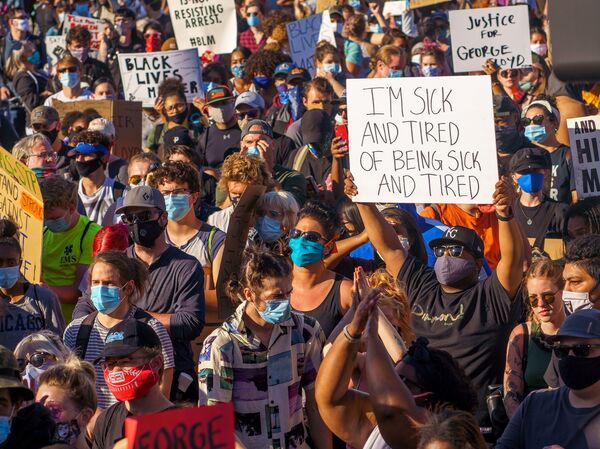Minneapolis ranks near the bottom for racial equality
Go Deeper.
Create an account or log in to save stories.
Like this?
Thanks for liking this story! We have added it to a list of your favorite stories.
Editor's note: This is an excerpt of Planet Money's newsletter. You can sign up here.

Last week, we shared findings showing how the COVID-19 crisis is making racial inequality worse. Since we published that newsletter, protests erupted in Minneapolis and spread throughout the nation — with marchers shouting "I can't breathe," the dying words of George Floyd, who was seen in a video with the knee of a Minneapolis police officer on his neck.
So, about Minneapolis ... we found it, and the Twin Cities area more generally, has some of the most abysmal numbers on racial inequality in the nation. Here is a snapshot:
The median black family in the Twin Cities area earns $38,178 a year — which is less than half of the median white family income of $84,459 a year. This income inequality gap is one of the largest in the nation; only nearby Milwaukee, Wis., is worse. The state of Minnesota as a whole has the second biggest income inequality gap between blacks and whites in the entire nation; only the District of Columbia is worse.
Before the pandemic, the black unemployment rate in Minnesota was at a historic low, but it was still double the white rate. In 2016, the Twin Cities area black unemployment rate was more than three times the white unemployment rate.
According to the most recent census data, the black poverty rate in the Twin Cities area was 25.4 percent, which is over four times the white poverty rate of 5.9 percent. The Twin Cities area black poverty rate is significantly higher than the national black poverty rate of 22 percent, while the white poverty rate is significantly lower than the national one of 9 percent.
While about three-quarters of white families in the Twin Cities own homes, only about one-quarter of black families do. The area had a long history where "racial covenants" made it hard for blacks to become homebuyers and live in white neighborhoods.
In 2019, the incarceration rate of blacks in the Twin Cities area was 11 times that of whites.
The state of Minnesota has one of the nation's worst education achievement gaps between blacks and whites. In 2019, it ranked 50th when it comes to racial disparities in high school graduation rates.
These data aren't about police bias directly. Instead, they are the persistent, troubling numbers that sit underneath the rising sense of unfairness, frustration, desperation and anger that we've seen over the last week. Keep in mind all these numbers were a snapshot of the situation before the economic collapse.
Special thanks to Timothy O'Neill and the Minnesota Department of Employment and Economic Development for helping us dig through the numbers.
Did you enjoy this newsletter segment? Well, it looks even better in your inbox! You can sign up here.
Copyright 2020 NPR. To see more, visit https://www.npr.org.
Turn Up Your Support
MPR News helps you turn down the noise and build shared understanding. Turn up your support for this public resource and keep trusted journalism accessible to all.



